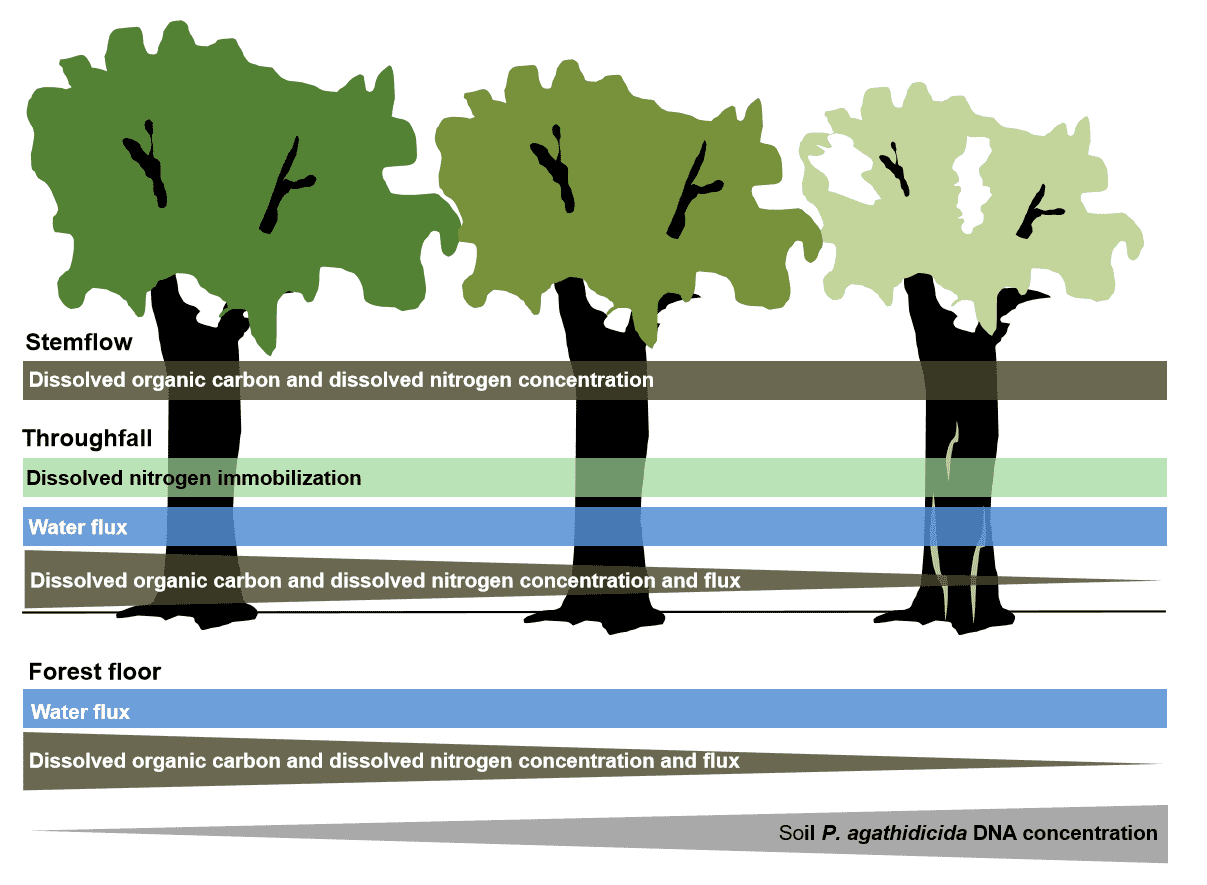A study has just been published containing new evidence that Austropuccinia psidii, the fungus that causes myrtle rust, is reproducing sexually in New Zealand in addition to cloning itself.
Kauri dieback affects dissolved organic matter cycles
Measuring dissolved organic matter could give an idea of the extent to which trees are infected with Phytophthora agathidicida, according to a recent study.
A new researcher takes the reins at Scion
Dr Stuart Fraser is in the thick of his first field season leading the myrtle rust team at Scion. We sat down with him to get his insights on the disease in Aotearoa and abroad.
Myrtle rust infection updates – 14 January 2020
The team at Scion didn’t stop for long over the Christmas break – this is their latest news about myrtle rust infections at selected monitoring sites in the North Island.
The climate crisis is also a biodiversity crisis
Like many of us, the summer break has seen me transfixed with horror at the scale and magnitude of the bushfire crisis in Australia.
Beetles helping to manage a common weed in Northland
Brazilian beetles could help control a common weed and regenerate native forest, according to a recent report led by Manaaki Whenua – Landcare Research.
Can feral cat control increase lambing rates?
This summer could tell the Cape to City team if their efforts to control feral cats have paid off.
Mātauranga Māori special issue
Mātauranga Māori received long-overdue time in the spotlight in early December, at the launch of a special edition of the New Zealand Journal of Ecology (NZJE).
A fond farewell in Ruatāhuna
Matua Tahae (Jim) Doherty received a fond farewell from working life and his role as Chair of the Tūhoe Tuawhenua Trust in late October.
Tranche 2 Dec 2019 update
The scoping and design process for Tranche 2 is now complete and we have several new projects underway . . .
December 2019 newsletter – National Science Challenge
An update on Tranche 2, a fond farewell, tackling toxoplasmosis and more . . .
Genetic and genomic technologies
Our current position is that gene drives and/or other GE technologies will potentially be useful for the eradication of pests in New Zealand – pests that are devastating many of our precious native birds, bats and insects. However, a great deal of research and understanding, as well as public acceptance, is required before such technologies […]











